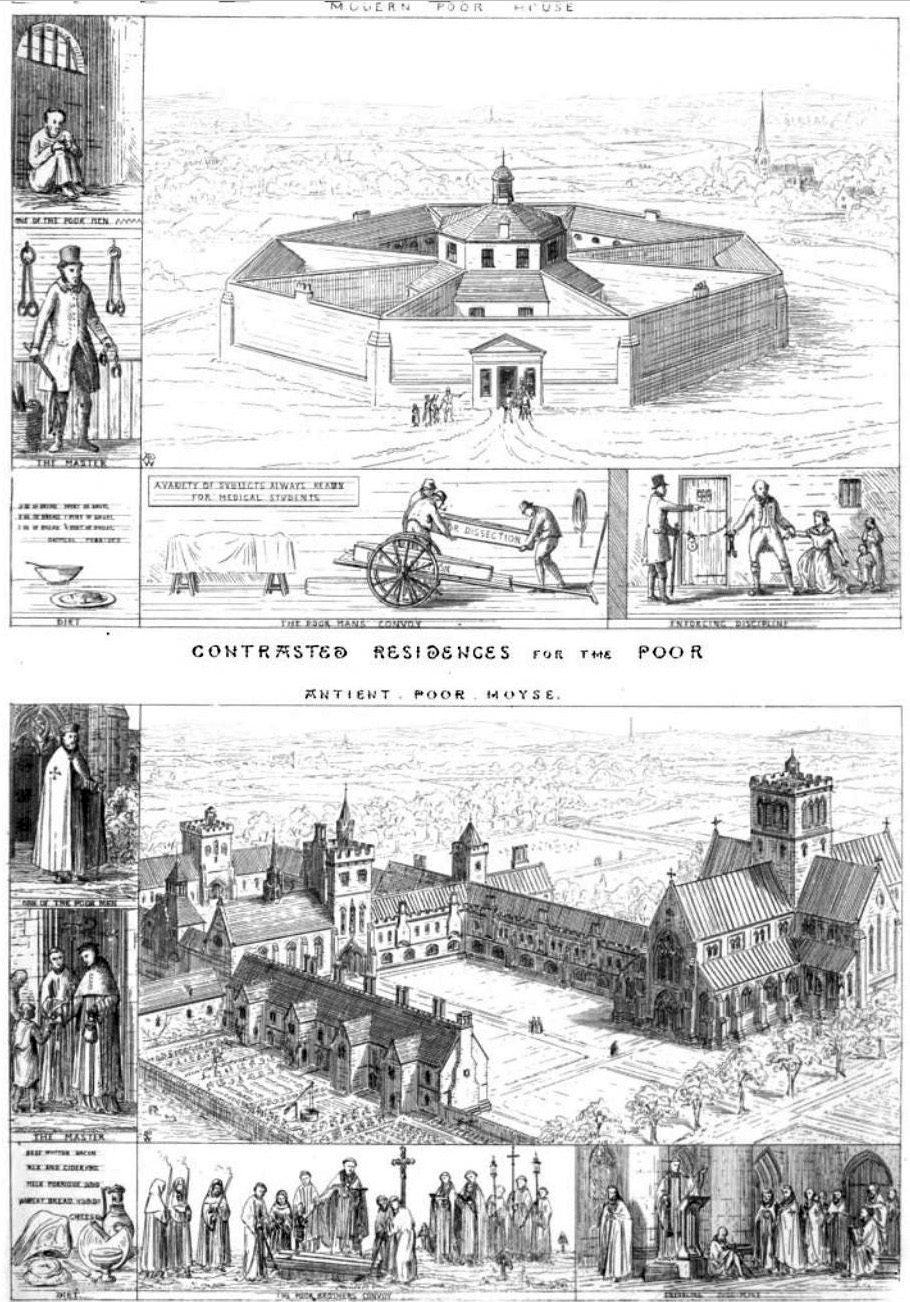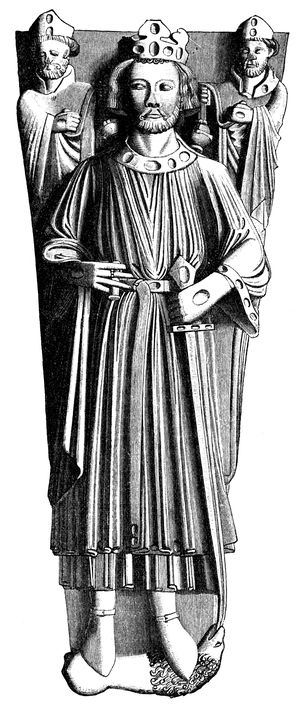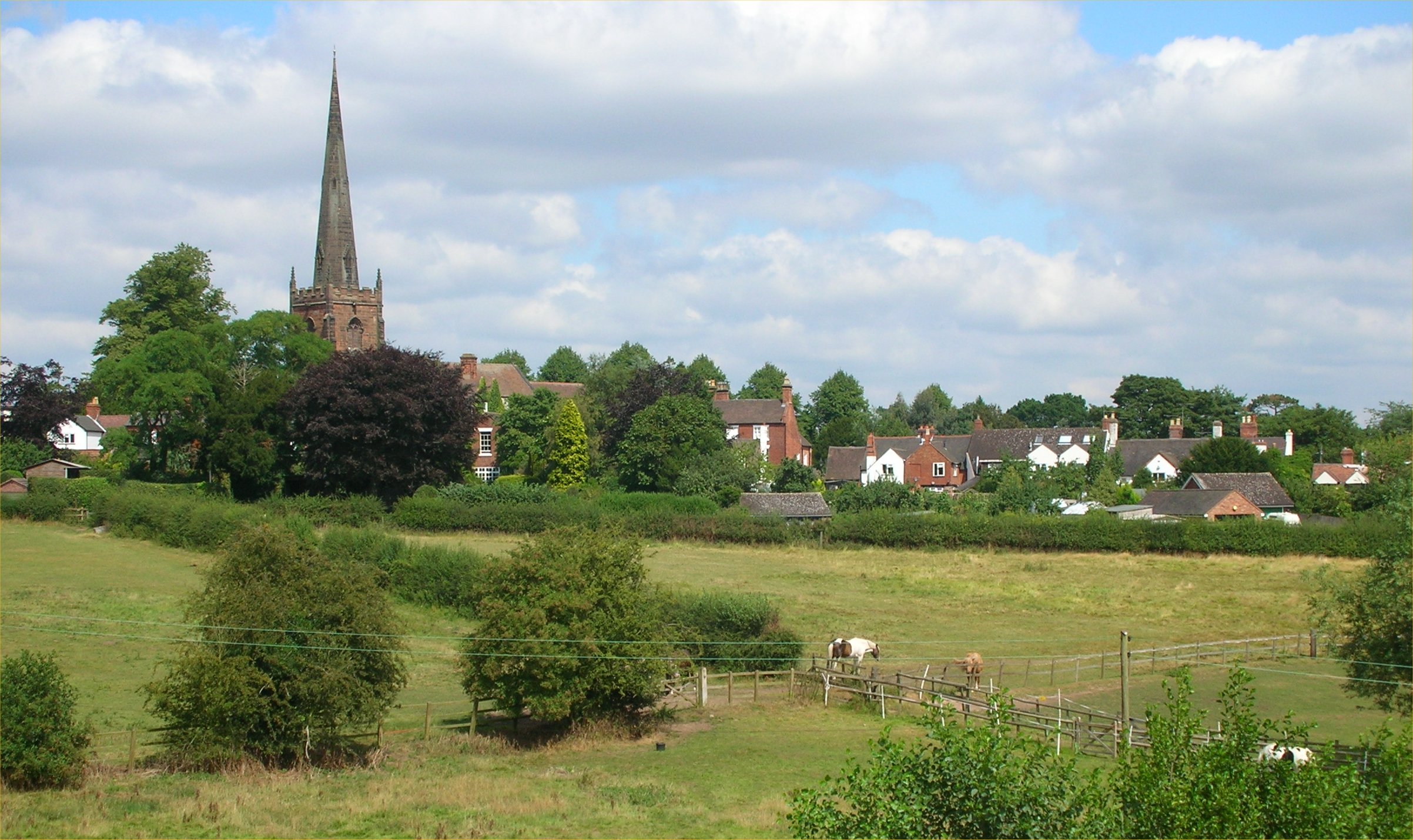|
St Mary's Church, Brewood
St Mary's Church, Brewood is a Roman Catholic parish church that was designed by Augustus Pugin. It has been a grade II listed building since 1974. History The land on which St Mary's is built was given by the Giffard family of Chillington Hall; the Giffards also paid for the upkeep of the early parish priests. Once the chapels in the local area had become too small for the parish's growing population of Roman Catholics, it was decided that a church, presbytery and school would be built in Brewood. Between the years of 1843 and 1844, the church was built, under the directions of Pugin, who also donated three stained glass windows to the church. At some point during the 19th century, a new type of microscopic fungi in bladder senna was discovered in the presbytery garden by the Rev. Philip G.M. Rhodes, from Oscott College. The fungi was named ''Diaporthe oncostoma''. A small sandstone pillar that possibly dates from the 13th century is located outside of the south porch. It is s ... [...More Info...] [...Related Items...] OR: [Wikipedia] [Google] [Baidu] |
Saint Mary
Mary was a first-century Jewish woman of Nazareth, the wife of Saint Joseph, Joseph and the mother of Jesus. She is an important figure of Christianity, venerated under titles of Mary, mother of Jesus, various titles such as Perpetual virginity of Mary, virgin or Queen of Heaven, queen, many of them mentioned in the Litany of Loreto. The Eastern Orthodox Church, Eastern and Oriental Orthodox, Catholic, Anglican, Methodist, Reformed Christianity, Reformed, Baptist, and Lutheran churches believe that Mary, as mother of Jesus, is the Theotokos, Mother of God. The Church of the East historically regarded her as Christotokos, a term still used in Assyrian Church of the East liturgy. Other Protestant views on Mary vary, with some holding her to have lesser status. She has the Mary in Islam, highest position in Islam among all women and is mentioned numerous times in the Quran, including in a chapter Maryam (surah), named after her.Jestice, Phyllis G. ''Holy people of the world: a cros ... [...More Info...] [...Related Items...] OR: [Wikipedia] [Google] [Baidu] |
Catholic Church
The Catholic Church (), also known as the Roman Catholic Church, is the List of Christian denominations by number of members, largest Christian church, with 1.27 to 1.41 billion baptized Catholics Catholic Church by country, worldwide as of 2025. It is among the world's oldest and largest international institutions and has played a prominent role in the history and development of Western civilization.Gerald O'Collins, O'Collins, p. v (preface). The church consists of 24 Catholic particular churches and liturgical rites#Churches, ''sui iuris'' (autonomous) churches, including the Latin Church and 23 Eastern Catholic Churches, which comprise almost 3,500 dioceses and Eparchy, eparchies List of Catholic dioceses (structured view), around the world, each overseen by one or more Bishops in the Catholic Church, bishops. The pope, who is the bishop of Rome, is the Papal supremacy, chief pastor of the church. The core beliefs of Catholicism are found in the Nicene Creed. The ... [...More Info...] [...Related Items...] OR: [Wikipedia] [Google] [Baidu] |
Augustus Pugin
Augustus Welby Northmore Pugin ( ; 1 March 1812 – 14 September 1852) was an English architect, designer, artist and critic with French and Swiss origins. He is principally remembered for his pioneering role in the Gothic Revival architecture, Gothic Revival style of architecture. His work culminated in designing the interior of the Palace of Westminster in Westminster, London, and its clock tower, the Elizabeth Tower (formerly St. Stephen's Tower), which houses the bell known as Big Ben. Pugin designed many churches in England, and some in Ireland and Australia. He was the son of Augustus Charles Pugin, Auguste Pugin, and the father of E. W. Pugin, Edward Welby Pugin, Cuthbert Welby Pugin, and Peter Paul Pugin, who continued his architectural and interior design firm as Pugin & Pugin. Biography Pugin was the son of the French draughtsman Augustus Charles Pugin, Auguste Pugin, who had immigrated to England as a result of the French Revolution and had married Catherine Welb ... [...More Info...] [...Related Items...] OR: [Wikipedia] [Google] [Baidu] |
Chillington Hall
Chillington Hall is a Georgian country house near Brewood, Staffordshire, England, four miles northwest of Wolverhampton. It is the residence of the Giffard family. The Grade I listed house was designed by Francis Smith in 1724 and John Soane in 1785. The park and lake were landscaped by Capability Brown. History In the Domesday Book of 1086, Chillington (Cillintone) is entered under Warwickshire as forming part of the estates of William FitzCorbucion. His grandson Peter Corbesun of Studley granted Chillington to Peter Giffard, his wife's nephew, for a sum of 25 marks and a charger of metal. The present house is the third on the site. In the 12th century there was a stone castle on the site, a small corner of which can be seen in the cellars of the present house, and beside it the original house. This house was replaced in the 16th century by Sir John Giffard, who was High Sheriff of Staffordshire on five occasions. Peter Giffard began the third building by demolishing and r ... [...More Info...] [...Related Items...] OR: [Wikipedia] [Google] [Baidu] |
Colutea Arborescens
''Colutea arborescens'' is a species of leguminous shrub known by the common name bladder-senna. It is native to Europe and North Africa, but it is known on other continents where it is grown as an ornamental and used in landscaping for erosion control. It is also known in the wild as an occasionally weedy escapee from cultivation. Description It is a vigorous shrub to 3 m, takes a rounded form and has many branches covered in deciduous leaves. The leaves are pale green and made up of many pairs of slightly hairy oval-shaped leaflets, each up to about 3 cm long. The inflorescence is a raceme A raceme () or racemoid is an unbranched, indeterminate growth, indeterminate type of inflorescence bearing flowers having short floral stalks along the shoots that bear the flowers. The oldest flowers grow close to the base and new flowers are ... of generally pea-like yellow flowers about 3 cm long. The fruit is an inflated bladdery pod which dries to a papery texture. It ... [...More Info...] [...Related Items...] OR: [Wikipedia] [Google] [Baidu] |
St Mary's College, Oscott
St Mary's College in New Oscott, Birmingham, sometimes called Oscott College, is the Roman Catholic seminary of the Archdiocese of Birmingham in England and one of two seminaries of the Catholic Church in England and Wales in England, with Allen Hall Seminary in London. (Another two are in Rome: the Venerable English College, and the Pontifical Beda College for men over 30.) Purpose Oscott College admits students for the priesthood from various dioceses of England and Wales, as well as some students from overseas. The first three years of the academic programme are validated by the University of Birmingham as a BA in Fundamental Catholic Theology. Those who complete the six-year programme, also obtain a Bachelor of Sacred Theology (STB) through affiliation with the Katholieke Universiteit Leuven. Additionally, Oscott College is a centre for formation of candidates regarding the permanent diaconate. History Old Oscott The college was founded in Oscott (present-day, Great Ba ... [...More Info...] [...Related Items...] OR: [Wikipedia] [Google] [Baidu] |
White Ladies Priory
White Ladies Priory (often Whiteladies Priory), once the Priory of St Leonard at Brewood, was an English priory of Augustinian canonesses, now in ruins, in Shropshire, in the parish of Boscobel, some northwest of Wolverhampton, near Junction 3 of the M54 motorway. Dissolved in 1536, it became famous for its role in the escape of Charles II of England after the Battle of Worcester in 1651. The name 'White Ladies' refers to the canonesses who lived there and who wore white religious habits. Origins The origins and exact date of foundation of the priory are not known: the latter part of the 12th century is generally accepted as the period of establishment. The surviving ruins show work typical of the late 12th century, and the first documentary evidence dates from 1186 or earlier. In it, Emma, daughter of Reynold of Pulverbatch, in the process of giving land to Haughmond Abbey near Shrewsbury, mentions that she has already granted a virgate of land in Beobridge to the white n ... [...More Info...] [...Related Items...] OR: [Wikipedia] [Google] [Baidu] |
Brewood Madonna
Brewood is an ancient market town in the civil parish of Brewood and Coven, in the South Staffordshire district, in the county of Staffordshire, England. Brewood lies near the River Penk, north of Wolverhampton and south of Stafford. Brewood is about east of the county border with Shropshire. Etymology The Domesday Book of 1086 documented the town as 'Breude'. The name is probably a compound made up of a Celtic, Brythonic word, and an Anglo Saxon, Old English word. The first element is the British word 'briga', which appears in modern Welsh as 'bre'. This is the most common of a number of Celtic place-name elements that signify a hill. It appears in various combinations, but sometimes on its own (as in Bray). Margaret Gelling, a specialist in West Midland toponyms, suggested that it was often misunderstood by the Anglo-Saxons as a name rather than as a common noun. Therefore, Anglo-Saxons would have thought that they had come upon a place that was called, by the natives ... [...More Info...] [...Related Items...] OR: [Wikipedia] [Google] [Baidu] |




